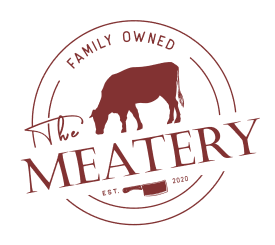Wagyu beef, a name synonymous with melt-in-your-mouth tenderness and rich marbling, has taken the culinary world by storm. But the story of this prized Japanese delicacy extends far beyond its luxurious taste. It's a tale deeply rooted in tradition, meticulous breeding practices, and a cultural reverence for quality. This article delves into the fascinating history of Wagyu beef in Japan, exploring its humble beginnings, its rise to international fame, and the unwavering dedication that continues to define its excellence.
Ancient Origins and a Shift in Focus
The story of Wagyu begins not with a focus on meat, but with hardworking bovine companions. Archaeological evidence suggests that cattle were introduced to Japan from mainland Asia around 200 AD. These early ancestors of Wagyu were much smaller and leaner, valued primarily for their strength in agricultural labor. They played a crucial role in tilling fields, transporting goods, and even pulling carts for nobility.
For centuries, the consumption of meat was largely restricted in Japan due to Buddhist beliefs. However, the arrival of the Meiji Restoration in 1868 marked a significant turning point. This period ushered in a wave of modernization, and with it came a shift in dietary habits. The consumption of beef became more widespread, and the focus on cattle breeding began to transition from strength to meat quality.
The Meiji Era: Crossing Breeds and Refining Techniques
The Meiji era witnessed a period of experimentation in Wagyu breeding. Foreign breeds such as Aberdeen Angus, Shorthorn, and Brown Swiss were imported and crossed with native Japanese cattle. This infusion of genetics aimed to improve the size and overall yield of the animals. However, breeders remained meticulous in selecting offspring that retained the unique marbling characteristics for which Japanese cattle were showing promise.
This era also saw the development of distinct regional variations within Wagyu. Specific regions in Japan began specializing in raising Wagyu, each with its own unique microclimate, feed sources, and breeding practices. These factors contributed to the emergence of regionally specific Wagyu brands, each boasting its own subtle flavor profile and characteristics. Kobe beef, perhaps the most internationally recognized Wagyu brand, hails from the Kobe region and is renowned for its exceptional marbling and melt-in-your-mouth texture. Other renowned regional Wagyu varieties include Ōmi beef, Matsusaka beef, and Yonezawa beef.
The 20th Century: Strict Standards and Unwavering Dedication
The 20th century saw further refinement in Wagyu breeding and quality control. In 1968, the Japanese government established the Japanese Meat Grading Association (JMGA). This organization implemented a rigorous grading system that meticulously evaluated various factors like marbling score, meat color and texture, and overall yield. The JMGA grading system ensured consistency and transparency within the Wagyu industry, guaranteeing consumers a premium product.
Wagyu cattle are raised with exceptional care. Strict regulations govern their diet, often incorporating high-quality grains and meticulously managed feeding schedules. Additionally, some breeders employ unique massage techniques to promote even marbling within the muscle tissue. This dedication to animal welfare and meticulous husbandry practices contributes significantly to the superior quality and distinctive flavor of Wagyu beef.
The latter half of the 20th century also witnessed the rise of Wagyu's international popularity. As travel and cultural exchange increased, Wagyu's reputation for exquisite taste spread beyond Japan's borders. Today, it's a highly sought-after delicacy enjoyed by discerning gourmands worldwide.
The Future of Wagyu: Innovation and Sustainability
The story of Wagyu is a continuous evolution. While the core principles of meticulous breeding and dedication to quality remain paramount, modern advancements are shaping the future of Wagyu production. Genetic research is being employed to further refine Wagyu breeds, ensuring optimal marbling and meat quality. Additionally, sustainable farming practices are becoming increasingly important. Breeders are exploring ways to reduce the environmental impact of Wagyu production while maintaining the exceptional quality that defines this prized beef.
Wagyu beef remains a testament to Japan's rich culinary heritage and unwavering commitment to excellence. It's a product not only of meticulous breeding but also of a deep respect for tradition and a dedication to providing an unparalleled culinary experience.
Conclusion: The Exquisite Journey Continues
The journey of Wagyu beef is a fascinating exploration of cultural exchange, meticulous breeding practices, and a dedication to culinary excellence. From its humble beginnings as a work animal to its current status as a global symbol of luxury, Wagyu's story continues to unfold.
For those seeking to experience the true essence of Wagyu, exploring reputable sources is paramount. Themeatery.com, a leading online retailer of premium Wagyu beef, offers a curated selection of authentic Wagyu from various regions in Japan.









